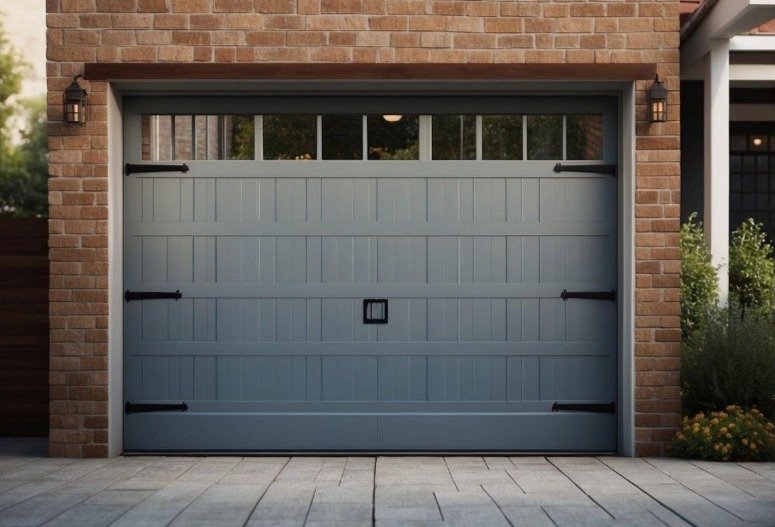How to Test Your Garage Door Balance: A Step-by-Step Guide
Testing the balance of a garage door is a crucial aspect of regular maintenance that ensures safe and efficient operation. A balanced garage door operates smoothly, reduces strain on the opener, and minimizes the risk of sudden movements that could lead to injury or damage. Over time, various factors such as wear and tear or shifting of components can disrupt the balance of a garage door, making it imperative to check the balance periodically.
The process of determining the balance involves a series of steps that can be performed by homeowners or professionals. An imbalanced garage door may exhibit signs such as uneven movement, difficulty in manual operation, or unusual noises. These indicators suggest that the tension in the springs may need adjustment to ensure the door can move freely and stay in place when partially opened. Properly balancing the garage door not only extends the lifespan of the door mechanisms but also ensures that the opener is not subjected to undue stress, which could lead to its premature failure.
Understanding Garage Door Mechanics
Garage doors operate smoothly thanks to a system of springs, cables, and other components working in harmony. Proper balance is crucial to prevent undue strain on the door opener and ensure efficient operation.
The Role of Springs in Garage Door Balance
Springs are integral to the balance and functionality of garage doors. They counterbalance the weight of the door, allowing for smooth movement. Torsion springs, mounted above the door opening, twist to exert force, while extension springs, placed on either side of the door, stretch and contract.
Torsion vs. Extension Springs
Torsion springs are preferred for their ability to provide more control over the motion of the garage door. They are known for their durability and stability. On the other hand, extension springs balance the door by extending and contracting, which can provide a smoother operation in certain configurations. Each of these spring types has specific installation requirements to ensure optimal balance.
Torsion Spring:
Mounted horizontally above the door opening
Twists and coils on a shaft with cables attached to the bottom corners of the door
Extension Spring:
Located on either side of the door tracks
Stretches along the horizontal part of the door tracks when the door is closed
Identifying Common Wear and Tear
Regular inspection of garage door components can reveal wear and tear that affects balance. Components to check include:
Springs: Look for gaps in the coil which indicate a broken torsion spring.
Cables: Fraying cables can snap, leading to imbalance and potential hazards.
Rollers: Worn rollers can cause stuttering movements of the door.
Hinges and Bearings: Degradation here can prevent the door from hanging correctly.
Tracks: Dents or warping in the tracks can impair door movement.
When one of these components is compromised, it affects the door’s balance and ability to move seamlessly. Large strains on these parts can lead to safety issues and decreased power efficiency of the garage door system.
Performing the Balance Test
Proper balance is crucial for the safe and efficient operation of a garage door. A balance test can prevent potential injury and ensure longevity of the door mechanism.
Preparation and Safety Measures
Before starting the balance test, it is essential to take safety precautions to prevent injury. Ensure the garage door opener is disconnected to avoid accidental activation. Engage the emergency release cord to allow for manual operation. Place C-clamps or locking pliers on the track just below the lowest roller to prevent the door from suddenly dropping.
Executing the Balance Test Step-by-Step
Close the door completely to ensure an accurate assessment.
Disconnect the garage door from the opener by pulling the emergency release cord.
Manually lift the door to the midpoint of its travel distance. It should be able to stay in place without assistance. If the door is equipped with a locking mechanism, it should be disabled beforehand.
Carefully observe the movement: A door that is properly balanced will remain at the midpoint without rising or falling.
If the door does not stay put, move it to a fully raised position and then down again to check for smooth operation throughout the range. Note any points of resistance or unevenness.
Interpreting Test Results
Balanced: The door stays at the midpoint without assistance and moves smoothly when raised and lowered.
Imbalanced: If the door moves upward or downward from the midpoint on its own or is difficult to move, the spring tension needs adjustment. Winding bars may be required for torsion spring doors while extension spring doors might need the spring hook adjusted.
Dangerous Condition: Should the door fall rapidly or be difficult to hold up, stop the test and secure the door with C-clamps or locking pliers above a roller. Seeking professional assistance is highly recommended as continuing with an imbalanced door can lead to serious injury.
Adjusting an Unbalanced Garage Door
Adjusting an unbalanced garage door is crucial to prevent wear and ensure smooth operation. A homeowner can perform some basic adjustments, but certain scenarios require the expertise of a professional technician.
When to Call a Professional
Complex Adjustments: If the garage door exhibits significant malfunctions or loud noises during operation, it is advisable to contact a professional service. The complexity of torsion spring adjustments poses risks of accidents, making professional intervention necessary.
Safety Concerns: If a homeowner is unsure or uncomfortable with the adjustment process involving torsion springs, ladder work, or winding cones, they should seek a technician's help to prevent potential injuries.
DIY Adjustment Steps
Prepare Tools: Gather the necessary tools including a sturdy ladder, winding bars, and a wrench or socket for the set screw.
Secure the Door: Close the garage door completely. Engage the emergency release handle if applicable to disconnect from the opener.
Locate Torsion Spring System: Identify the torsion tube and springs above the garage door.
Adjustment Procedure:
Safety First: Position the ladder to the side of the torsion spring to avoid being directly in the spring's path were it to break.
Insert Winding Bar: Insert the winding bar securely into the bottom hole of the winding cone.
Loosen Set Screws: Loosen the set screws on the winding cone with the wrench or socket.
Adjust Tension: Hold the winding bar in place, and insert the second bar into the next hole. Lift up or push down to increase or decrease spring tension as needed.
Tighten Set Screws: Once the desired tension is reached, remove the bottom bar while holding the winding bar with tension applied. Tighten the set screws before removing the second bar.
Fine-Tuning Tension and Alignment
Balanced Movement: Adjust the spring tension so the door stays in place when lifted halfway and moves smoothly without extra energy input or resistance.
Alignment Checks: After adjustments, open and close the door to ensure it is aligned with the tracks and operates without imbalance or binding.
Repeat Steps if Necessary: Minor adjustments may be needed to achieve perfect balance. Repeat the adjustment steps cautiously, fine-tuning the tension.
Safety Inspection: After each adjustment, inspect the garage door parts for any signs of wear or damage that may warrant repairs.
If executed with caution, the described adjustments by the homeowner allow for sustaining a garage door's balance. However, when the procedure extends beyond their comfort zone or expertise, homeowners should contact a professional.
Maintenance and Prevention
Maintaining a garage door in good working condition requires systematic checks and prompt action to address wear and tear. Proper balance is essential for energy-efficient operation and minimizing strain on the garage door opener.
Routine Checks and Service Tips
A garage door should undergo regular maintenance to ensure its durability and safe operation. Service typically includes:
Visual Inspection: Check for signs of wear on cables, springs, and pulleys.
Balance Test: Disconnect the opener and lift the door halfway; it should stay in place if balanced.
Lubrication: Apply appropriate lubricants to moving parts such as hinges and rollers.
Safety Features: Test safety sensors and auto-reverse mechanisms monthly.
Scheduled professional service should be done at least annually, where a technician can tackle more complex tasks such as spring tension adjustments and roller replacements.
Upgrading Garage Door Components
Over time, components may need to be replaced to maintain safety and performance:
Springs: They counterbalance the door and should be replaced by a professional when worn.
Openers: Older models might need to be replaced with newer, more energy-efficient units.
Hardware: Updating brackets, cables, and rollers can improve overall operation.
It's advisable for homeowners to consult with a garage door technician before selecting upgrades to ensure they align with their system's specifications.
Addressing Power Outages and Emergencies
To prepare for power outages, homeowners should know how to manually operate their garage door:
Find the manual release handle (usually a red cord) on the opener.
Pull the handle to disconnect the door from the opener.
Lift the door manually, taking care to move it evenly and steadily to prevent misalignment.
In case of a power outage or emergency, the door may need to be opened manually to allow for vehicle access or egress. For safety reasons, homeowners should avoid attempting significant repairs during power outages and instead wait to contact a repair company when power is restored.









